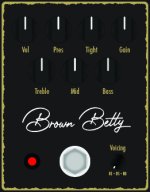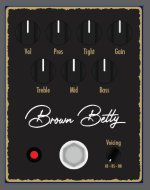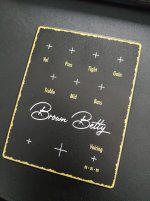So I had an enclosure for the Brown Betty printed, inspired by the Friedman pedal design. I pulled the RGB color code off the Friedman website and used it in my design. Looks fine on screen, files were all working CMYK, but the print turned out much more yellow. Anybody got an idea what the issue is or any suggestions for a nice Friedman gold?
Now that I uploaded the mockup it has that same yellowish hue... What is going on? How do I display it the correct way within Illustrator? Left is the exported JPG straight out of Illustrator - wrong color, same as the print on the right - middle is a screenshot of how it appears to me in program and what I actually wanted.



Now that I uploaded the mockup it has that same yellowish hue... What is going on? How do I display it the correct way within Illustrator? Left is the exported JPG straight out of Illustrator - wrong color, same as the print on the right - middle is a screenshot of how it appears to me in program and what I actually wanted.




